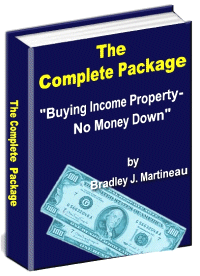In any city, large or small, there are neighborhoods that will produce
profitable investments and neighborhoods that are unprofitable using the quick
turnaround, rehab-and-sell technique. Because tremendous variety in neighborhood
characteristics ca be found through the country, it is difficult to definitely
describe the good versus the bad neighborhoods from an investment
perspective. Let me offer some general guidance, because this is an important
investment consideration.
Profitable neighborhoods always have this characteristic: People who have
saved enough money for a down payment and can qualify for conventional bank
financing want to live in this neighborhood. This above all else, is the best
indicator of a potentially profitable neighborhood.
The question is, "How can i tell if a particular neighborhood meets this
criterion?" The only way to do this is to take a look at the sales statistics
over the past couple of years. The best way to do this is through your real
estate agent, who has access to this information on the local MLS database. In
general, here is what you are looking for:
- An active real estate market; that is, many closed-sale transactions,
coupled with a number of pending sales and current listings.
- A high percentage of the sales (more than 75 percent) are to
owner-occupants, not to investors buying rental units.
- The majority of buyers purchase the homes with conventional financing, not
with real estate or land contracts from the sellers.
Your real estate agent can easily and quickly pull up this information on any
neighborhood by simply running what's known as comparative market analysis, CMA,
on the MLS computer system. With this step completed, let's take a look at some
of the other desirable characteristics of an ideal, target neighborhood.

